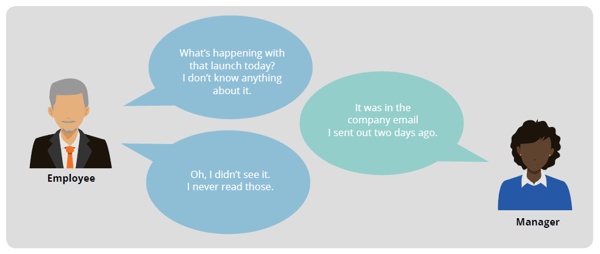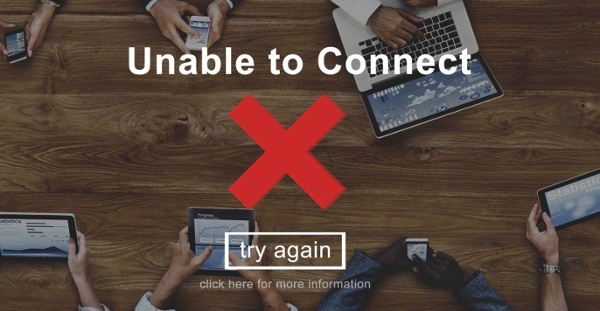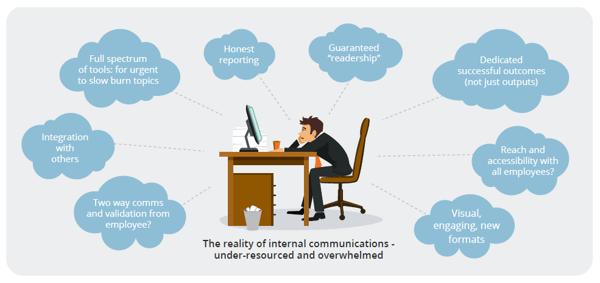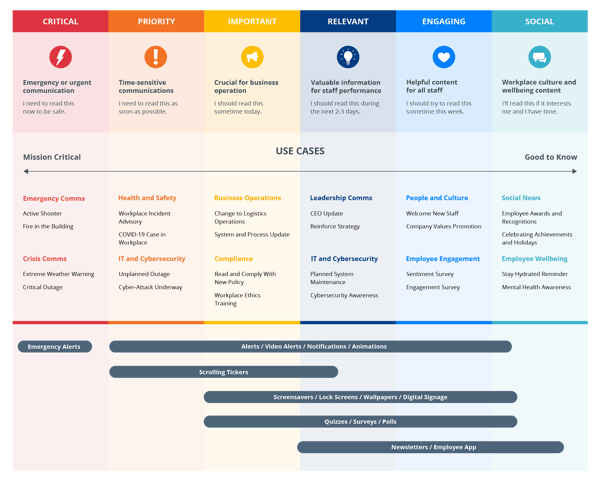
Here’s a typical workplace conversation. It may even have come from your organization.
Employee: “What’s happening with that launch today? I don’t know anything about it.”
Manager: “It was in the company email I sent out two days ago.”
Employee: “Oh, I didn’t see it. I never read those.”
Sound familiar?
Successful organizations are built on successful staff. When staff are motivated and engaged, they perform at higher levels. A 10% increase in engagement creates $2,400 higher profit for every employee, every year.
But to reach employees, organizations need a modern solution. The traditional ways of communicating just don’t cut it. Today’s winning workplaces are getting creative.
This is the first in a series of three internal communication strategy articles taking you through how to update your internal comms platform. From identifying the need, to building your business case, and successfully engaging your stakeholders – welcome to the new world of comms!

Danger Signs: How To Spot An Internal Comms Disaster
Internal communications are the vital link between employers and employees. They inform staff of important information, engage them with company values, and inspire greater performance.
But all too often, messaging misses the mark. Essential business communications are neglected.
The impact of this is more than just a frustrated Internal Communications Manager. Uninformed employees make more mistakes, which presents greater business risk. Disengaged employees are less productive and more prone to leave.
There are warning signs which alert you to ineffective internal comms. Keep your eyes open for these telltale signs. If you spot these in your workplace, you’ll know the time is right for a comms upgrade.
![]() 1. Staff are missing important info
1. Staff are missing important info
When you ask them a question on an important subject, they don’t know the answer
![]() 2. Required actions aren’t being taken
2. Required actions aren’t being taken
When asked to do something, not only do they not do it, they sometimes aren’t aware of being asked!
![]() 3. Responses to questions are scarce
3. Responses to questions are scarce
When staff surveys or requests for information are sent, the silence is deafening and response rates low
![]() 4. Staff are disconnected
4. Staff are disconnected
Involvement in training or meetings is low and staff generally appear unmotivated to do more than the minimum

![]() 5. Desired changes aren’t happening
5. Desired changes aren’t happening
Staff aren’t adhering to new procedures or adopting new workplace behavioral changes
![]() 6. Staff don’t know what the company stands for
6. Staff don’t know what the company stands for
When they can’t state your objective, vision, values and USPs, staff can’t embody or strive for them
![]() 7. Time and effort is being wasted
7. Time and effort is being wasted
The messages crafted by you or your teams are having no effect – and your hard work goes down the drain
![]() 8. The value of comms is unquantified
8. The value of comms is unquantified
No-one can tell if the value derived from your communications exceeds its cost
There are a number of reasons for less effective internal communication. The ways in which employees engage with their workplace has changed. Many organizations have been slow in understanding and adapting to these changes.
Tools like email continue to be overused, despite being considered ineffective, according to a report by The Economist Intelligence Unit.
Modern communication tools get employee attention. They’re unmissable, interactive and visually-appealing – just the way employees prefer. Upgrading your employee communications platform is essential to harness the power of your workforce.

Get Engaged With A Better Way to Communicate
Employee media preferences have changed. Consumer preferences have become part of the corporate landscape. This is especially true amongst younger workers and with today's prevalence of hybrid work.
A study of workplace communication preferences revealed that more than 60% of respondents ignore emails at work. The same study showed that nearly half of workers believed that reducing emails at work would make them happier in their job.
Why are emails failing? The answers are revealed in this infographic.
Employees have options to engage or not with company communications. Leadership communications can be easily checked – it’s no longer possible to ‘spin’ the employee. Social media provides an unparalleled platform for employees to share their thoughts on the company.
Technology has opened the doors to more diverse ways of reaching employees. Platforms dedicated to assessing company culture, distributing company newsletter digests, or communicating important corporate content are all available.
Today there is an abundance of employee communications and messaging technologies. But some are stronger than others when it comes to delivery. Platform selection is critical.
Choosing The Right Tools To Reach Your Audiences
Organizations today have a wide array of technologies to choose from. To achieve the goals set out in internal communication plans, optimizing tactical execution is essential.
Ensure you have the right tools for each initiative. A broad range of channels may be necessary, incorporating high-visibility and intrusive, to passive and slow burn formats.
Consider our Communication Spectrum framework below. The nature of your initiative, from critical to social, will in large part define the most appropriate communication channels.

Always be mindful of your top-line objectives. Do you really need a collaboration tool, or is top down communication best suited?
For example, an emergency notification requires immediate action, hence a Desktop Alert would be considered optimum in this situation. Alerts are effective for top-down, real-time communications to employees. After all, it’s human nature to react quickly to alerts.
Direct to-screen messaging outperforms email due to being attention-grabbing, timely and action-oriented. Follow-up notifications and visual options can drive message visibility to 100%.
When you’ve identified the warning signs and decided that you need an internal comms upgrade, the next step is to make it happen. That means building a compelling business case.
In the next article of the series we’ll take you through building an internal comms business case, and share with you example templates you can use.


